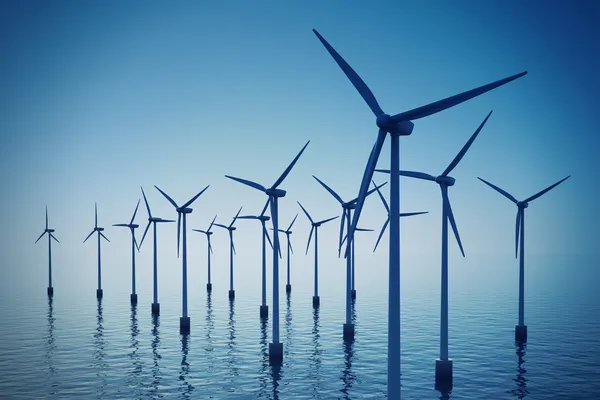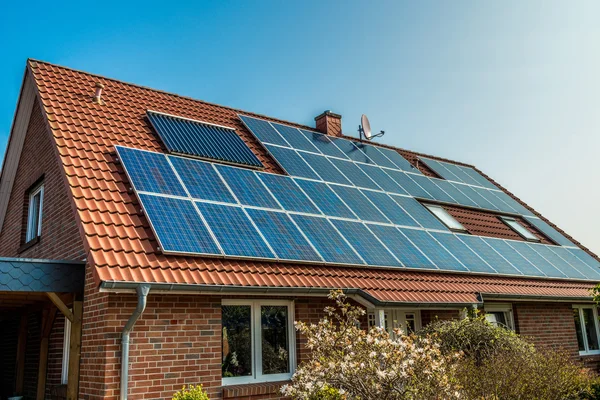
Wind energy has become a cornerstone of the global transition to renewable energy, offering a clean and sustainable alternative to fossil fuels. Wind turbines, the towering giants that harness the power of the wind, are symbols of this shift towards greener energy. However, like any technology, wind energy comes with its own set of benefits and challenges. This article explores the environmental impact of wind turbines, highlighting the importance of using recycled materials in their construction and discussing how we can maximize their benefits while mitigating potential drawbacks.
The Benefits of Wind Energy
1. Clean and Renewable Energy Source
Wind energy is one of the cleanest forms of energy available. Unlike fossil fuels, which release harmful greenhouse gasses and pollutants when burned, wind energy generates electricity without emitting carbon dioxide or other pollutants. This makes wind power a crucial tool in the fight against climate change, as it helps reduce the carbon footprint of the energy sector.
Moreover, wind is a renewable resource that is abundant and widely available across the globe. Unlike finite fossil fuels, wind energy can be harnessed indefinitely as long as the wind continues to blow. This sustainability makes wind power an essential component of the global energy transition.
2. Reduction in Fossil Fuel Dependency
The expansion of wind energy reduces our dependence on fossil fuels, which are not only environmentally damaging but also subject to volatile market prices and geopolitical tensions. By diversifying the energy mix with wind power, countries can enhance their energy security and stabilize energy costs.
Wind turbines also have a relatively short energy payback period, meaning the energy used to manufacture, transport, and install a wind turbine is quickly offset by the clean energy it produces. Over its lifetime, a single wind turbine can generate far more energy than was used to create it, contributing to overall energy efficiency.
3. Job Creation and Economic Growth
The wind energy industry is a significant driver of job creation and economic growth. From manufacturing and installation to maintenance and operations, the industry provides a wide range of employment opportunities. Additionally, the growth of wind energy can stimulate local economies, particularly in rural areas where wind farms are often located.
The Environmental Impact of Wind Turbines
While wind energy offers numerous environmental benefits, it is not without challenges. The environmental impact of wind turbines must be carefully managed to ensure that the benefits outweigh the drawbacks.
1. Land Use and Habitat Disruption
Wind farms require large areas of land, which can lead to habitat disruption for wildlife. The construction of wind turbines can disturb local ecosystems, particularly if they are located in sensitive areas such as migratory bird routes or marine environments. Careful planning and environmental assessments are essential to minimize these impacts.
2. Noise and Visual Impact
The noise generated by wind turbines, often referred to as “blade swish,” can be a concern for communities living near wind farms. Although modern turbines are designed to operate more quietly, noise pollution can still be an issue, particularly in rural areas where ambient noise levels are low. Additionally, the visual impact of wind turbines on landscapes can be controversial, with some people considering them an eyesore.
3. End-of-Life Disposal
One of the significant challenges facing the wind energy industry is the disposal of wind turbine components at the end of their life cycle. Wind turbines are made of materials such as steel, concrete, and fiberglass, some of which are difficult to recycle. As more wind turbines reach the end of their operational lives, the issue of waste management becomes increasingly important.
The Role of Recycled Materials in Building Wind Turbines
To address the environmental challenges associated with wind energy, the use of recycled materials in the construction of wind turbines is becoming increasingly important. Incorporating recycled materials into turbine production can reduce the environmental footprint of the manufacturing process and contribute to a circular economy.
1. Steel and Aluminum Recycling
Steel and aluminum are two of the most commonly recycled materials used in wind turbines. Recycling these metals not only conserves natural resources but also significantly reduces the energy required for production. For example, producing steel from recycled materials uses about 60% less energy than producing it from raw materials.
2. Composite Material Recycling
Wind turbine blades are often made from composite materials like fiberglass and carbon fiber, which are challenging to recycle. However, advancements in recycling technologies are making it possible to repurpose these materials for use in other industries, such as construction or automotive manufacturing. By investing in recycling solutions for composite materials, the wind energy industry can reduce waste and improve the sustainability of turbine production.
Key Takeaways
- Clean Energy: Wind energy is a renewable and clean source of electricity that reduces carbon emissions and helps combat climate change.
- Economic Benefits: The wind energy industry creates jobs and stimulates economic growth, particularly in rural areas.
- Environmental Challenges: Wind turbines can disrupt local ecosystems and pose challenges related to noise, visual impact, and end-of-life disposal.
- Recycling Importance: Using recycled materials in wind turbine production reduces the environmental impact and supports a circular economy.
Wind energy is vital to a sustainable future, but we must address its environmental challenges to maximize its benefits. At Cleancyclers, we are committed to promoting recycling and sustainable practices within the renewable energy sector. By supporting our efforts, you can help us make wind energy even greener and more sustainable.
Together, we can ensure that wind energy remains a force for good in the fight against climate change.


